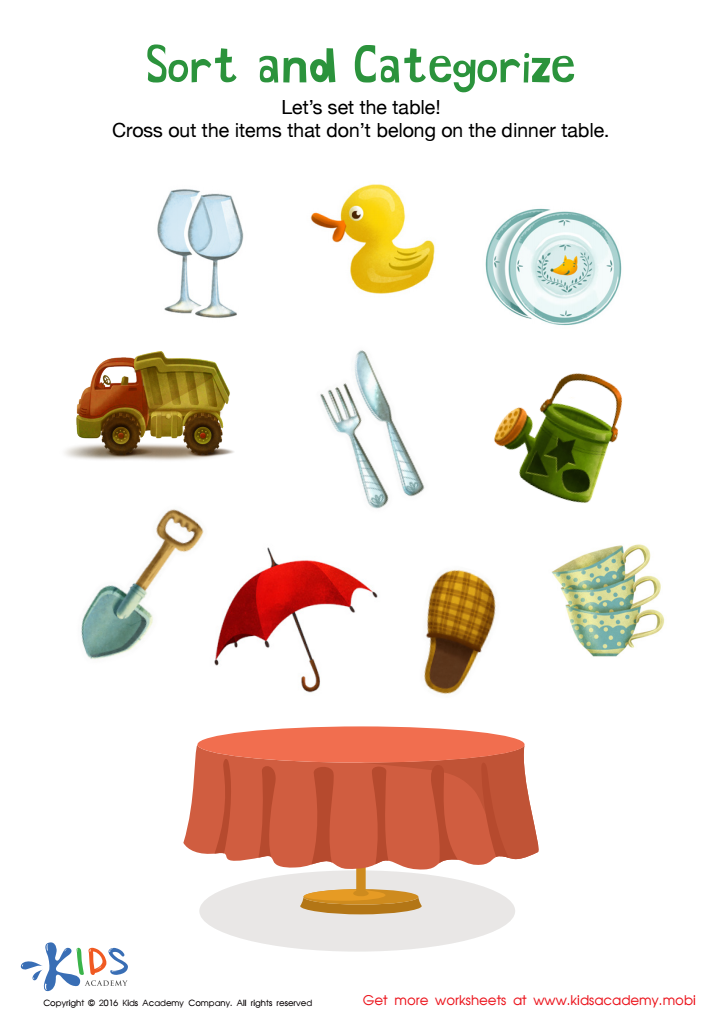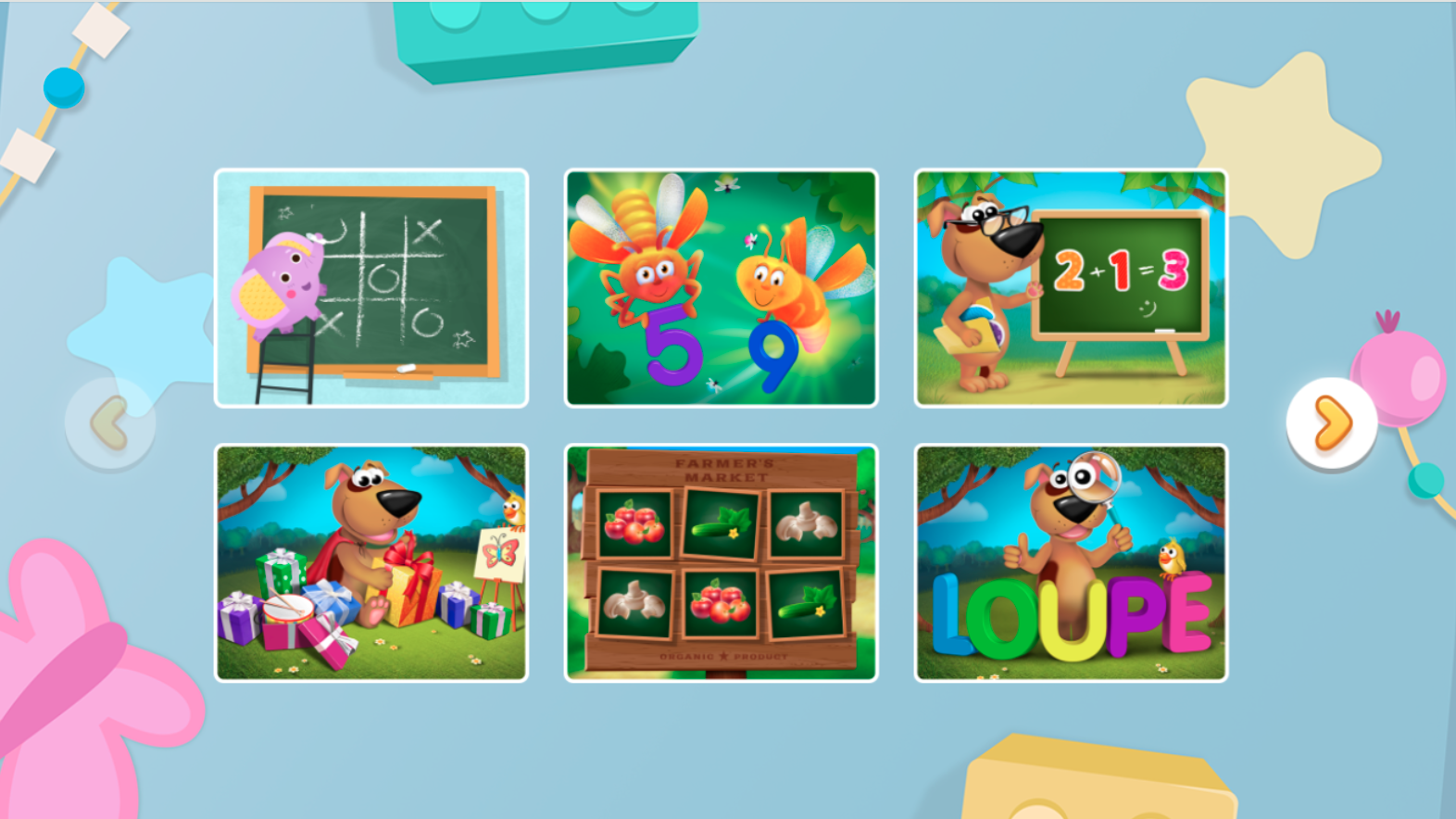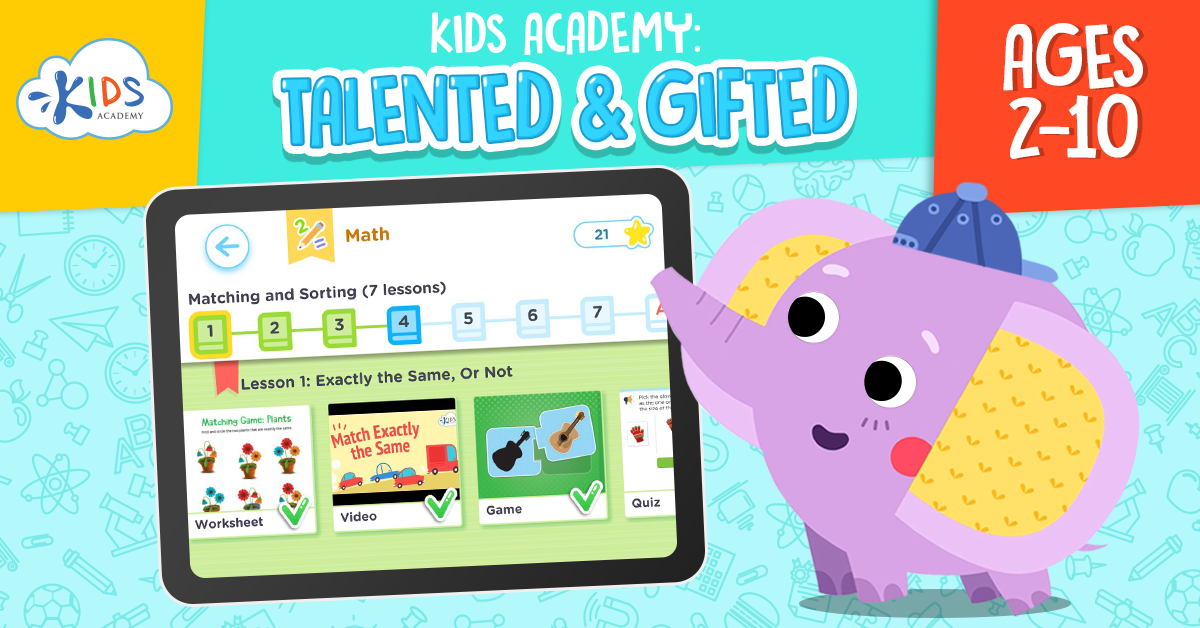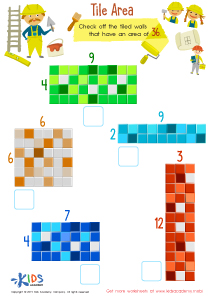Categorization skills Normal Sorting Worksheets for Ages 5-7
5 filtered results
-
From - To
Enhance your child's learning journey with our "Categorization Skills Normal Sorting Worksheets" designed specifically for ages 5-7. These engaging and colorful worksheets help young learners develop essential sorting and categorization abilities. By classifying objects, shapes, animals, and more, children will not only improve their critical thinking and organizational skills but also foster creativity and understanding of similarities and differences. Each worksheet features age-appropriate activities that keep kids motivated and enthusiastic about learning. Perfect for homes, classrooms, or remote learning, these worksheets offer a fun and interactive way to build foundational math skills while promoting cognitive development. Get started today!
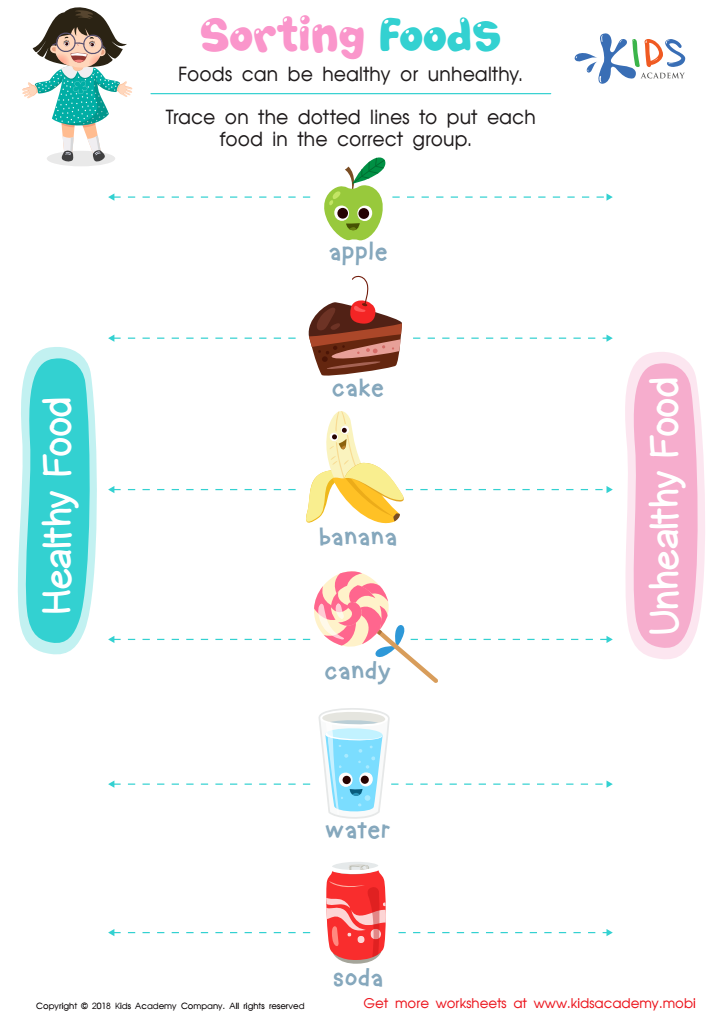

Sorting Food Worksheet
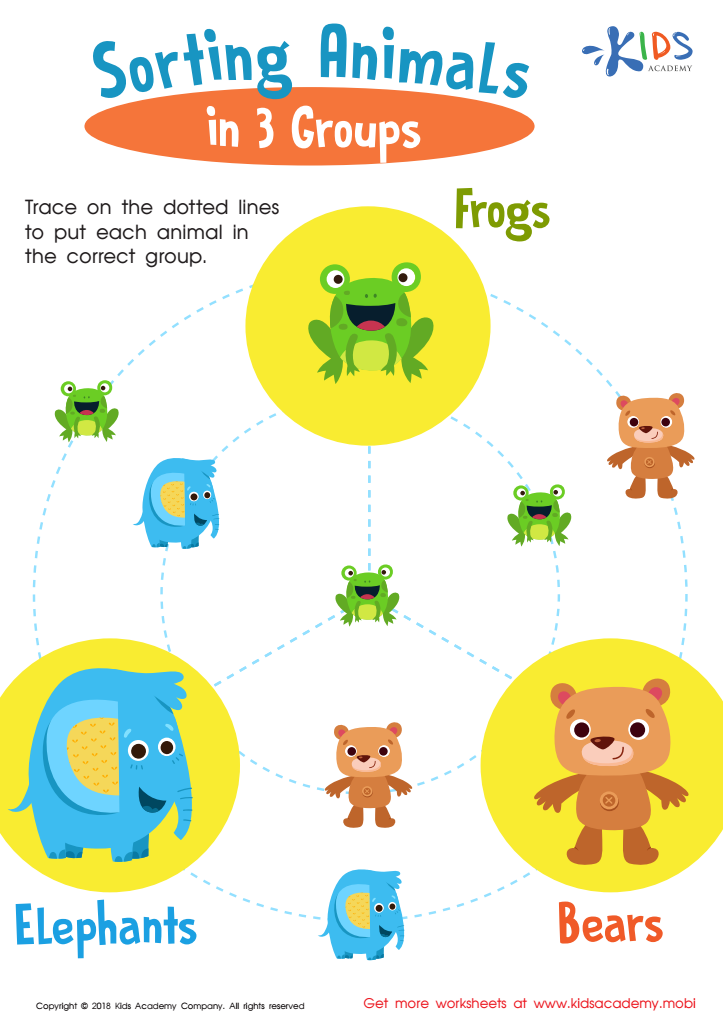

Sorting Animals in 3 Groups Worksheet
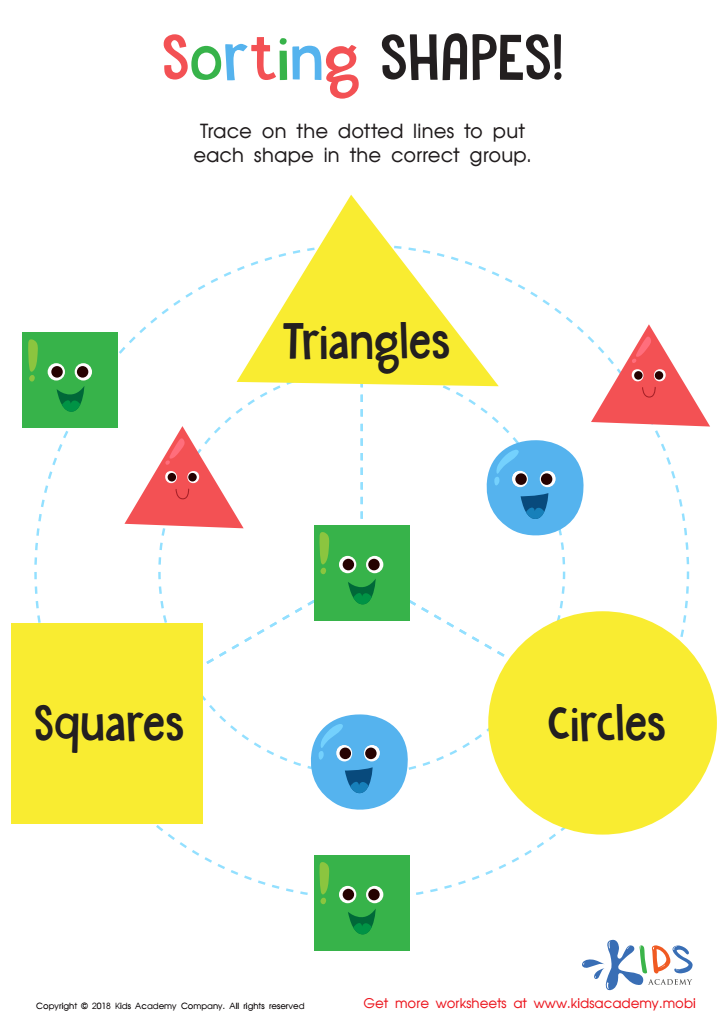

Sorting Shapes - Part 3 Worksheet
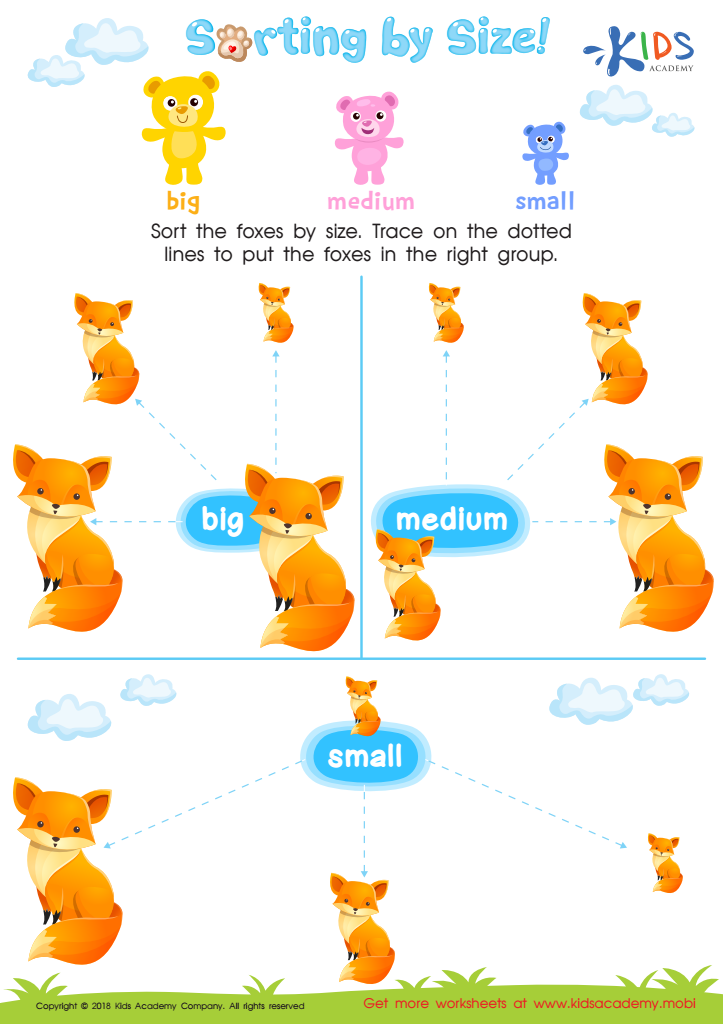

Sorting by Size Worksheet
Categorization skills, particularly normal sorting, are foundational cognitive abilities for children aged 5-7. At this age, children are developing critical thinking and problem-solving abilities, and sorting helps enhance these skills. When children categorize or sort objects based on criteria such as color, shape, or size, they learn to recognize patterns and similarities, which boosts their observational skills.
Parents and teachers should prioritize normal sorting activities as they promote foundational mathematical and literacy concepts. Mastery of sorting can lead to better understanding of more complex ideas like classification in science and data organization in math. Furthermore, sorting encourages children to articulate reasoning behind their choices, enhancing language skills and boosting self-confidence in communication.
Additionally, sorting activities foster social-emotional development through cooperative play. As children sort together, they learn important social skills such as negotiation, teamwork, and patience. Engaging in sorting games or activities can also make learning fun and interactive, deepening a child’s enthusiasm for education.
In summary, supporting children’s categorization skills through normal sorting not only prepares them for more advanced academic subjects but also nurtures essential life skills at a critical age of development.
 Assign to My Students
Assign to My Students
